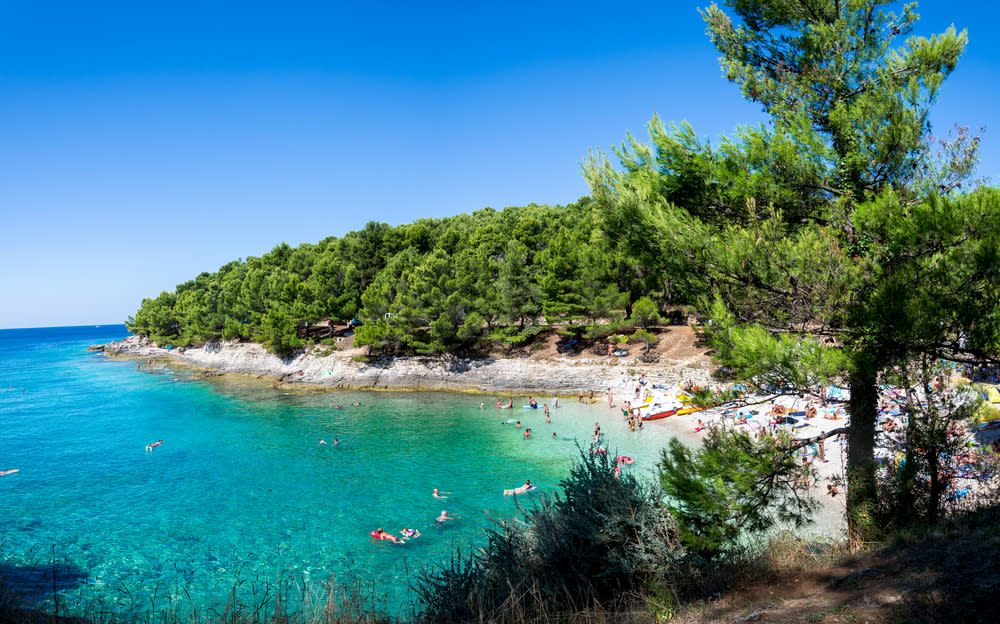More from Pula
Main Menu
- 00:00
- 06:00
- 12:00
- 18:00
- 23:00
Pula : Next 24-Hour Weather
Today - 10th April 2025
Sunrise 06:29
Sunset 19:45
Tomorrow - 11th April 2025
Sunrise 06:29
Sunset 19:45
Holiday Weather Now
Sorted by popularity:
Updated at 12:01 GMT
-
Temp feels like13°C56°F
-
Length of day13h 16m
-
Pressure30" (1021 hpa)
-
Visibility10 km (6miles)
-
Wind speed8 km/h
Sunrise 06:29
Sunset 19:45
-
Temp feels like:
13ºC (56 ºF)
-
Length of day:
13h 16m
-
Pressure:
30" (1021 hpa)
-
Visibility:
6 miles (10 km)
-
Wind speed:
8 km/h
Pula; one of Croatiaâs largest cityâs, is situated on the south western coast of the Istrian peninsula. The town enjoys a typical Mediterranean climate, with mild winters and warm summers. With an average of 2300 hours of sunshine annually and average temperatures lingering at a comfortable 16°C, the area of Pula creates a divine experience for holiday makers from all over Europe.
Pula generally only has two distinct seasons; summer, relatively warm and also very dry and winter, mild with gentle breezes. With its location nearby the Adriatic Coastline and its enjoyable weather conditions, as well as its enchanting city centre and picturesque beauty Pula attracts visitors from all over the world. The finest months to holiday in Pula are those from May to September
Rainfall occurs mostly throughout the months between September to January, with average precipitation ranging around 800mm per year. November is usually the wettest month seeing an average of 100mm, and July the driest with less than 50mm.
The three winds characteristic of the region are; sirocco, bora and the mistral. In summer a soothing breeze is always present that will help cool the characteristic hot moist nights. The sea temperature in winter varies between 9°C and 11°C, the summer average is about 24°C.
Summers in Pula are pleasantly warm, with the sun shining for an average of seven hours a day. July and August are the hottest months, with average temperatures of over 22°C. The summer months provide supreme surroundings for seeing the sights of the seashore and relaxing nearby the beaches on or around the peninsula.
Spring and autumn temperatures are comparable, with temperatures in May reaching 15°C and once summer comes to a halt, September and October see the climate drop to 18°C to 15°C correspondingly. These pleasant warm months either side of summer are major tourist seasons, providing the perfect temperatures for the peak of exploring the prospects that this beautiful town offers.
Once the winter months arise the rather admirable temperatures begin to drop. The climate will generally dip down to low temperatures of 5°C during the coldest months of January and February but will normally sit at a consistent 9°C. The weather alongside the Adriatic coast is to some degree very different from a typical Mediterranean climate as the region does not experience half the amount of rainfall as most other regions, causing a dried out region brought by the cold and chaotic bora wind that blows from the northeast.
The archipelago that sits just off the peninsula of Pula is a must for any visitor to Pula, home to an impressive national park, with a host of a rich environment. As well as areas of stunning natural beauty, the Brijuni Islands boast numerous historical and cultural areas, including archaeological sites, settlements and ruins, as well as a handful of hotels and luxurious villas.

















